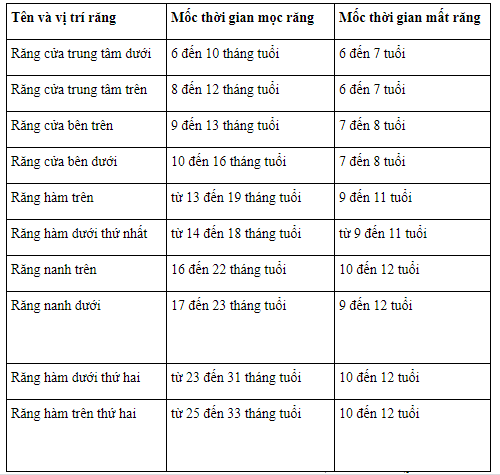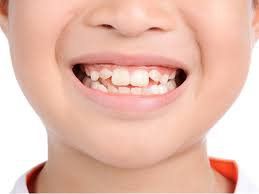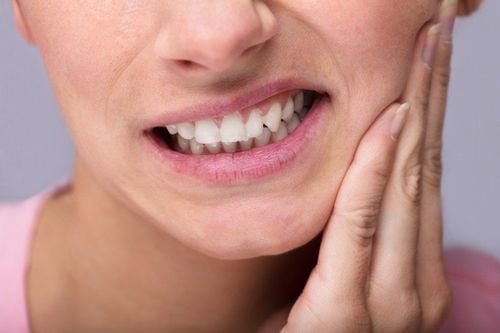This is an automatically translated article.
The article was professionally consulted by Specialist Doctor II Cao Thi Thanh - Pediatrician - Pediatrics - Neonatology Department - Vinmec Hai Phong International General Hospital. Dr. Thanh has worked for 25 years in the treatment of neonatal pediatric diseases.One of the most important moments marking a child's development is the time when their baby's teeth fall out and teeth come in. The fact that parents have knowledge about the problem of replacing baby teeth will help them take better care of their children.
1. Baby teeth chart when growing and falling out
Basically, the baby will grow a total of 20 baby teeth to eat and chew. Your baby's first tooth comes in at 6 months old and grows until about 3 years old. When a child is 6 years old, they will gradually lose their baby teeth until 12 years old, they will lose all their baby teeth. By adolescence, young people will have all 32 permanent teeth.
The time when the permanent teeth are about to erupt, the roots will begin to gradually disappear until they are completely lost. At that time, the root of the tooth will be shaken and fixed by the adjacent gum tissue.
See more: What is called delayed teething?
2. Sequence of baby teeth eruption
2.1. Central incisors Most babies lose their baby teeth in the order in which they erupt. Therefore, the middle and lower incisors are the first teeth to erupt at 6 months of age. Usually, the first tooth will cause the most pain for your baby. So when teething babies: irritability, crying, irritability, refusal to feed, low fever and drooling. At this time, you should give your baby soft foods, keep your child's teeth clean, and use gum cream when necessary to help reduce teething pain in children.2.2. When the child turns 7 - 10 months old, at this time, the two upper front teeth continue to erupt, the two lower incisors often appear later.
2.3. Time to erupt molars in children According to the rule from 5-7 years old, the permanent middle incisors grow, replacing the milk middle incisors. This is also the time when children grow their first molars (big molars) after the second baby teeth. At the age of 9 to 10 years old, the first premolars (small molars) erupt, replacing the first baby molars. At the age of 10, milk canines will be replaced. Finally, at the age of 11-12 years old, the second premolars (small molars) erupt, replacing the primary molars.
See more: What moms need to know when babies have molars

Trẻ từ 5-7 tuổi răng cửa giữa sẽ vĩnh viễn mọc
3. What happens if the baby doesn't follow the teething time?
When your child is delayed in teething compared to the above specified time for not too long, you should not worry. Because a child will have a different body. However, if the condition of your child's teething delay persists for a long time, you should talk to your doctor to find out the cause.Besides, whether it is baby teeth or permanent teeth, parents also need to pay attention to taking care of their children's teeth very carefully. This not only helps to limit the problems of tooth decay and enamel damage, but also helps children to have a confident appearance and not affect their pronunciation if their teeth are accidentally misaligned.
It can be seen that the period of baby teeth replacement is very important. If, during the teething period, the child shows symptoms such as high fever, defecation, skipping meals, etc., it is necessary to take the child immediately to the hospital for examination as soon as possible.
In addition, parents should also apply some methods of changing habits and improving nutrition to support the child's teeth to develop better.
Besides, parents also need to supplement their children with essential micro-minerals such as zinc, lysine, chromium, selenium, vitamin B1, ... to fully meet the nutritional needs of children. The addition of these essential vitamins also supports digestion, enhances nutrient absorption, improves anorexia, and helps children eat well. Parents can simultaneously apply dietary supplements and functional foods derived from nature for easy absorption. The most important thing is that improving your baby's symptoms often takes a long time. Combining many types of functional foods at the same time or changing many types in a short time can make the baby's digestive system unable to adapt and completely not good. Therefore, parents must be really patient with their children and regularly visit the website vimec.com to update useful baby care information.














